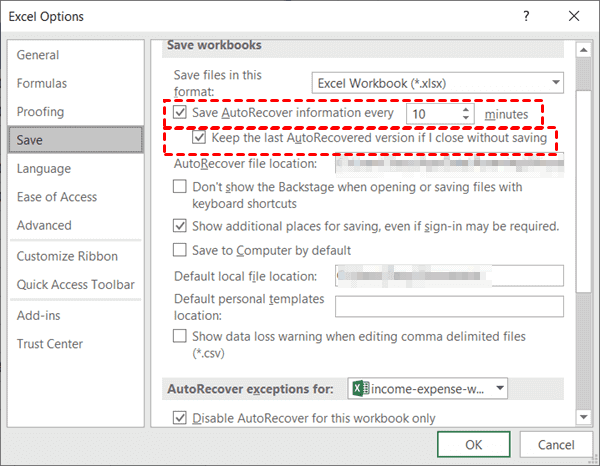5 Ways to Recover Deleted Excel Sheets Instantly

Losing important data in an Excel workbook can be a stressful experience, especially when it involves critical information or complex data sets. However, there are several methods you can use to attempt to recover your deleted Excel sheets. Let's delve into five effective ways to recover deleted Excel sheets instantly.
1. Use Excel’s Undo Feature

The simplest and quickest way to recover a recently deleted Excel sheet is by using the Undo command. Here’s how you can do it:
- Press
Ctrl + Zon your keyboard to undo your last action. - Alternatively, click the “Undo” button in the Quick Access Toolbar at the top of the Excel window.
If you've closed Excel since deleting the sheet, this method won't work. However, it's always the first step to try if your session is still active.
2. Restore from AutoRecover Files

Excel has an AutoRecover feature that saves a copy of your workbook at regular intervals. To recover from this:
- Open Excel, and go to File > Info > Manage Workbook > Recover Unsaved Workbooks.
- Look for any recovered files or versions of your deleted sheet.
🔍 Note: AutoRecover files are usually saved in the Recycle Bin if Excel crashes or unexpectedly closes. Check there if you cannot find them within Excel itself.
3. Use the Document Recovery Task Pane

If Excel recovers a document after a crash, it will notify you through the Document Recovery task pane upon reopening the application. Follow these steps:
- When Excel starts, check for the Document Recovery pane.
- Click on any available versions of your workbook to open them.
- Save the workbook to ensure you don’t lose the recovered data again.
This method can help recover data if the sheet was deleted during an Excel crash or sudden shutdown.
4. Retrieve from Temporary Files

Excel creates temporary files during your work sessions. You can manually look for these files to recover your work:
- Search for files with the .tmp extension on your system, especially in the temp folder located at
C:\Users[Username]\AppData\Local\TemporAppData\Local\Microsoft\Office\UnsavedFiles. - Look for files with names similar to your workbook or with recent modification dates.
- Rename and open them in Excel to check if they contain your deleted sheet.
5. Use Professional Data Recovery Software

If the above methods fail, or if you need to recover data from a damaged or corrupted file, professional recovery software might be your last resort:
- Choose a reputable recovery tool like EaseUS Data Recovery, Recuva, or Stellar Data Recovery.
- Follow the software’s instructions to scan for and recover lost Excel files.
🛠️ Note: Recovery software can sometimes retrieve data from formatted drives or deleted files that are no longer in the Recycle Bin.
Having lost data in Excel can be a significant setback, but with the methods outlined above, there's often a good chance of recovering what you've lost. Remember, the key to successful recovery is prompt action. Regularly save your work, enable AutoRecover, and familiarize yourself with these recovery techniques to minimize potential data loss.
In summary, to recover deleted Excel sheets, you can:
- Use the Undo command if the session is still open.
- Check AutoRecover or temporary files if the sheet was deleted recently.
- Use recovery software for damaged or deleted files beyond immediate recovery options.
Can I recover a sheet deleted from Excel a week ago?

+
Yes, if the AutoRecover feature was enabled and there are no other files overwriting the temporary files, you might still recover it. However, the chances decrease over time.
What if Excel crashes before I save my work?

+
Excel’s AutoRecover feature can help here. Upon reopening Excel, check the Document Recovery task pane to see if there are any unsaved versions of your workbook.
Are there any preventive measures to avoid data loss in Excel?

+
Absolutely. Always enable AutoRecover, save your work frequently, and consider using cloud services like OneDrive for real-time backups.



